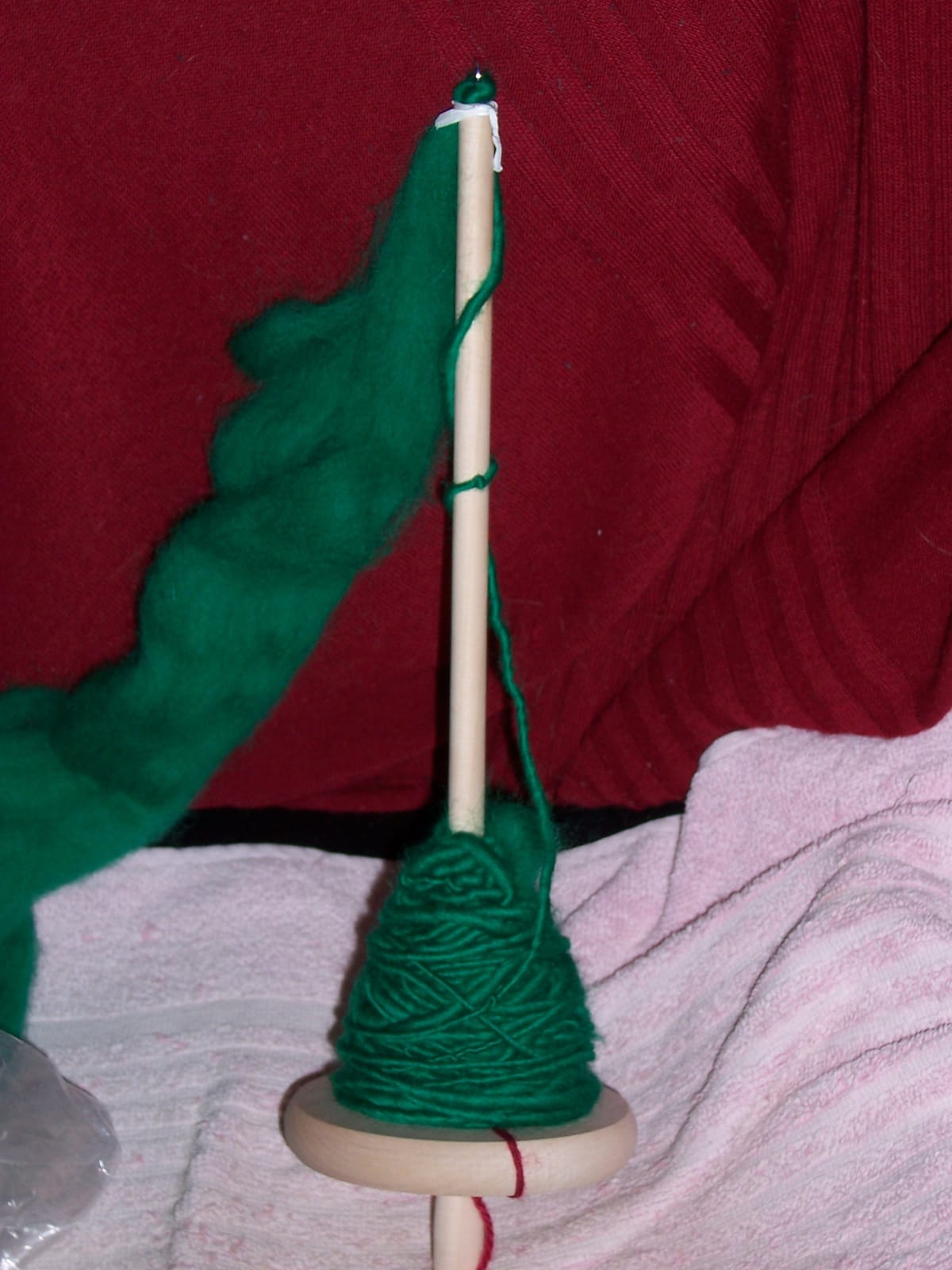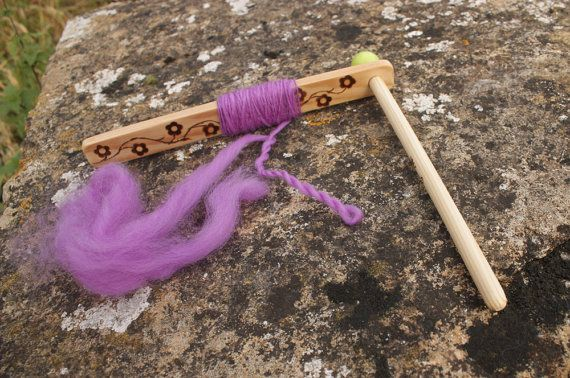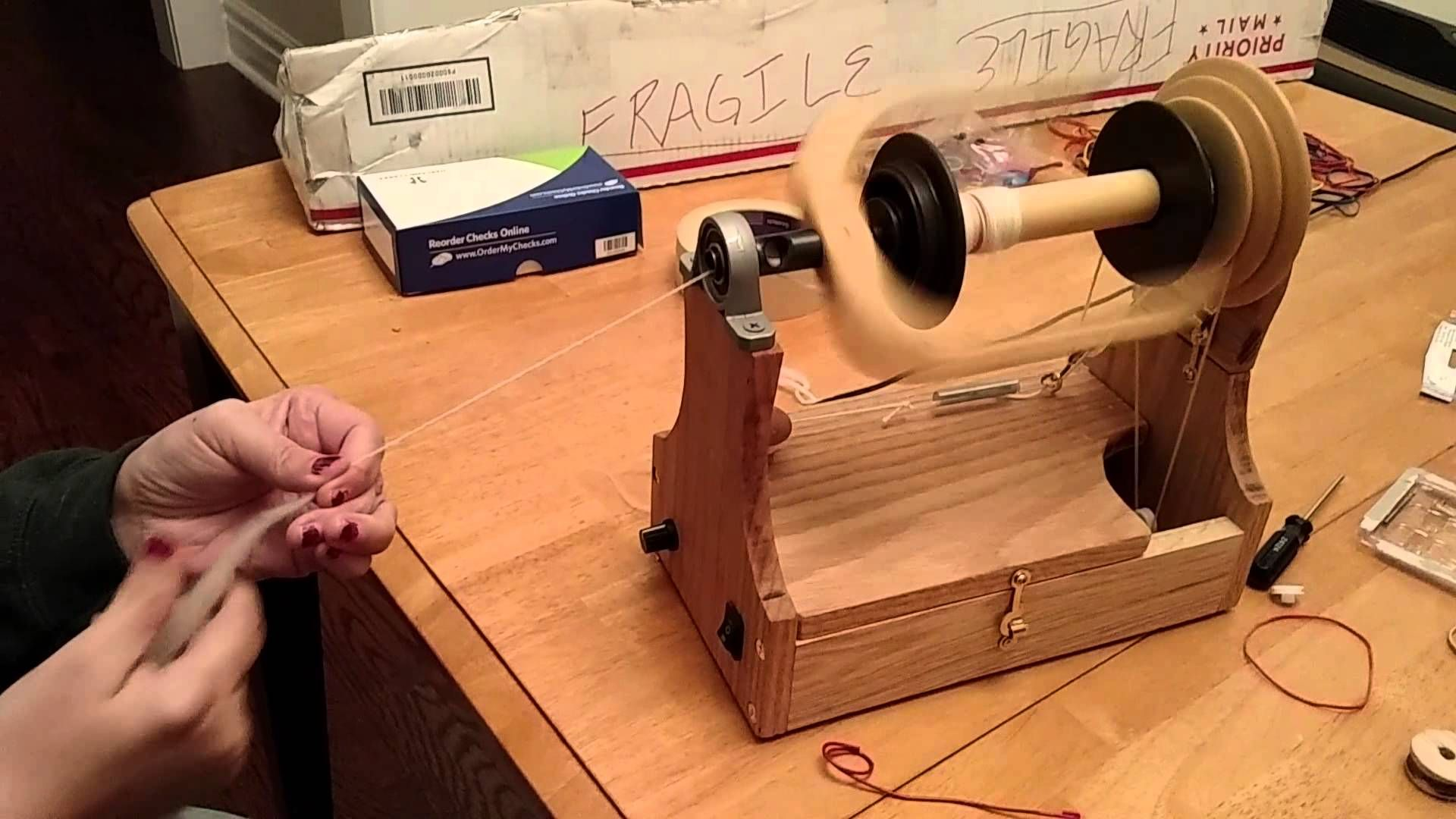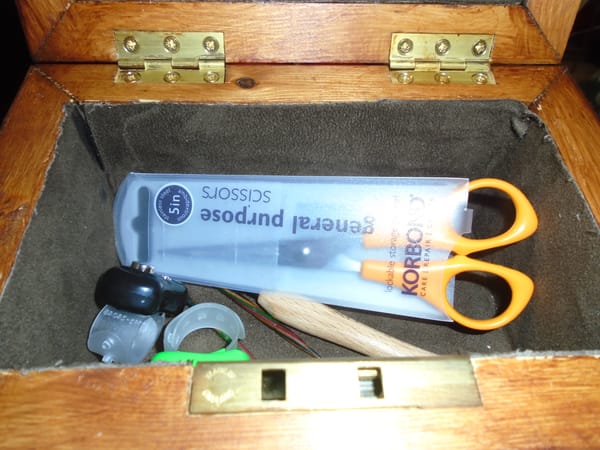Had-a-bashery

One of my aunts has a spinning wheel. She and my uncle live in the middle of Nowhere, Cumbria (oh, wait, it's not Cumbria now, is it? I'm not sure whether they're now Westmorland or Lancashire), in what I think probably used to be a farmhouse. It's quite idyllic. And, of course, this being... er... whatever county it is now... anyway, the north-west of England, or as a friend of mine likes to put it "the north-wet", there are lots of sheep about. The sheep wander round fairly aimlessly, as sheep are wont to do, and every now and then they get their wool tangled up in something. My aunt goes round collecting this stuff, bags it up, and when she has enough she sets up the spinning wheel and off she goes.
The spinning wheel produces lovely neat regular yarn, and I should think the movement is very relaxing; however, it is not a practical thing to have if you live in a tiny flat rather than a rambling old farmhouse (or even, for that matter, in an ugly little cubic terraced house in Sheffield with a flat black asphalt roof). Spinning wheels take up a lot of space, and they're also not cheap. So, when I decided to give spinning a try myself, I bought a hand spindle instead; I don't recall where I bought it, but it was probably that little craft shop in Kendal where I bought the bead loom, because I do remember I bought the roving there.
As usual, I'm not going to go into detail about the technique, because other websites do it better than I can (and with helpful pictures, at that); this one is an excellent example, though it's American (and incidentally also right-handed, so if you're left-handed, or you're like me and don't have a clear hand dominance, you might want to reverse left and right in the instructions at least some of the time). The main thing to note is the purpose of that length of red yarn you can see at the bottom of the spindle. That's called the leader, and it solves a rather basic problem, which is that you need to attach the yarn to the spindle in order to spin it, but you can't attach it till you've spun it! So you attach the leader to the spindle, fluff out the free end, and join the fibres you're spinning into that.
Well, as you see, I'm never going to be spinning up the yarn for my own knitting. I could not get the hang of it at all. It's not even simply that the yarn is uneven, although it is, very much so; it varies from less than 4-ply weight all the way up to chunky. (The site I linked brightly advises that if you get any irregularities, you can use it as a novelty yarn. Not even I am prepared to go that novel.) It's not very clear from the photo, but the yarn also has way too much twist. I was stuck between Scylla and Charybdis here; if I twisted it too much it snarled itself up all the time, but if I didn't twist it enough the fibres wouldn't hold together properly and the yarn kept breaking, and there didn't seem to be any happy medium. I knew it existed. It just... didn't seem to be accessible.
I can't remember exactly what I did with it in the end, but I am extremely determined when I want to be; I had spent all this time spinning the wretched stuff, so I was going to use it one way or another. I might have tried weaving with it. Weaving is a lot more forgiving of irregularities than knitting is. It's certainly what I'd do with it if I had it in front of me now.
This is the most common kind of hand spindle out there, but there are other kinds. All the following images are taken from Pinterest, so I can't trace the original owners; so if you see any of these and it's yours, please let me know what you'd like me to do (credit you, take it down, or whatever). This is a Mayan spindle and I have absolutely no idea how it works:

And this one is Basque:

And then there's this. It's electric, which is a bit of a cheat, and I think it's unique; the caption says it's hand-built.

I like this idea. It leaves you with both hands free to draw the fibres to a roughly consistent thickness, which you don't get with a hand spindle; you're spinning with one hand and drawing with the other. You can't let go of a hand spindle while it's in operation, otherwise everything comes rapidly unspun, so it's not as if you can just break off spinning for a moment to use both hands on the fibres. And just look at the yarn... well, thread, really... in the photo above; it's completely even. Stick that in a dye bath and you could embroider with it. I'm impressed.
However, I don't know how to go about building such a device, and even if I did I'm not sure where I'd get acrylic roving (I suppose I could spin cotton wool if I really wanted to); and one can buy perfectly even pre-spun yarn easily and cheaply. So I think I'm going to bow out gracefully and file this one under "tried it, didn't work".
Even so, if anyone can show me how that Mayan spindle works, I've got to admit I'm insanely curious!




